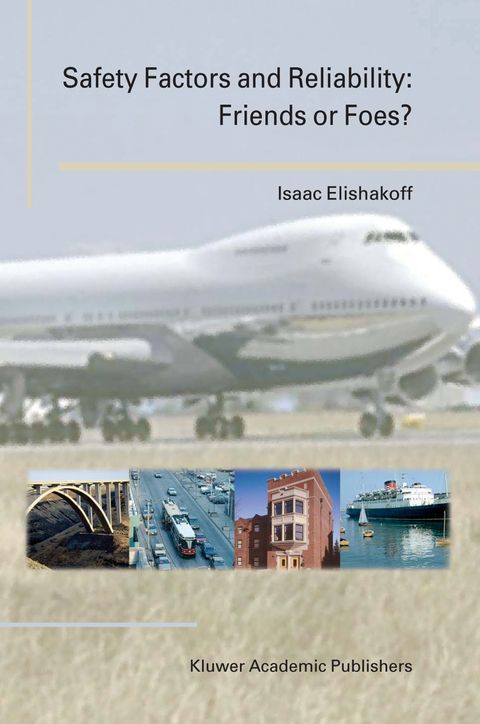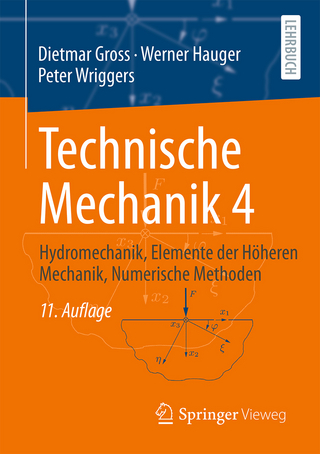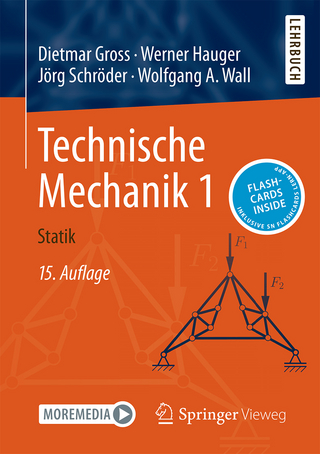
Safety Factors and Reliability: Friends or Foes?
Springer-Verlag New York Inc.
978-1-4020-1779-7 (ISBN)
Have you ever wondered where the safety factors come from? Why is it that deterministic analysis has reached a very sophisticated level, but in the end empirical factors are still needed? Is there a way to select them, rather than assigning them arbitrarily as is often done?
This book clearly shows that safety factors are closely related with the reliability of structures, giving yet another demonstration of Albert Einstein's maxim that "It is incomprehensible that Nature is comprehensible". The book shows that the safety factors are much more comprehensible if they are seen in a probabilistic context. Several definitions of the safety factors are given, analytical results on insightful numbers are presented, nonprobabilistic safety factors are shown, as well as their estimates derived by the inequalities of Bienayme, Markov, Chebushev and Camp-Meidell. A special chapter is devoted to important contributions by Japanese experts.
This volume will help to critically re-think the issue of safety factors, which can create a false feeling of security. The deterministic paradigm can be enhanced by incorporating probabilistic concepts wisely where they are needed without treating all variables as probabilistic ones. The book shows that there is a need of their integration rather than separation.
This book is intended for engineers, graduate students, lecturers and researchers.
1 Prologue.- 2 Reliability of Structures.- 2.1 Introductory Comments.- 2.2 Basic Concepts.- 2.3 How Accurate Is Minimum Distance Reliability Index?.- 2.4 Safety Factors as Discussed in Literature.- 2.5 About the Acceptable Probability of Failure.- 2.6 A Priority Question.- 2.7 Concluding Comments on the Stress-Strength Interference Method.- 3 Safety Factors and Reliability: Random Actual Stress & Deterministic Yield Stress.- 3.1 Introductory Comments.- 3.2 Four Different Probabilistic Definitions of a Safety Factor.- 3.3 Case 1: Stress Has an Uniform Probability Density, Strength Is Deterministic.- 3.4 Case 2: Stress Has an Exponential Probability Density, Yield Stress Is Deterministic.- 3.5 Case 3: Stress Has a Rayleigh Probability Density, Yield Stress is Deterministic.- 3.6 Case 4: Stress Has a Normal Probability Density, Yield Stress Is Deterministic.- 3.7 Case 5: Actual Stress Has a Log-Normal Probability Density, Yield Stress is Deterministic.- 3.8 Case 8: Actual Stress Has a Weibull Probability Density, Strength is Deterministic.- 3.9 Actual Stress Has a Fréchet Probability Distribution, Yield Stress Is Deterministic.- 3.10 Actual Stress Has Two Parameter Weibull Probability density, Yield Stress Is Deterministic.- 3.11 Actual Stress Has a Three Parameter Weibull Probability Density, Yield Stress Is Deterministic.- 3.12 Discussion: Augmenting Classical Safety Factors, via Reliability.- 4 Safety Factors and Reliability: Deterministic Actual Stress & Random Yield Stress.- 4.1 Yields Stress Has an Uniform Probability Density, Actual Stress is Deterministic.- 4.2 Yield Stress Has an Exponential Probability Density, Actual Stress Is Deterministic.- 4.3 Strength Has a Rayleigh Probability Density, Stress Is Deterministic.- 4.4 Various Factors of Safety in Buckling.-4.5 Yield Stress Has a Weibull Probability Density, Actual Stress Is Deterministic.- 4.6 Yield Stress Has a Fréchet Distribution, and Actual Stress Is Deterministic.- 4.7 Yield Stress has a Three Parameter Weibull Distribution, and Actual Stress Is Deterministic.- 4.8 Yield Stress Has a Two Parameter Weibull Distribution, and Actual Stress is Deterministic.- 4.9 Concluding Comments on Proper Distribution Functions.- 5 Safety Factor and Reliability: Both Actual Stress and Yield Stress Are Random.- 5.1 Introductory Comments.- 5.2 Both Actual Stress and Yield Stress Have Normal Probability Density.- 5.3 Actual Stress Has an Exponential Density, Yield Stress Has a Normal Probability Density.- 5.4 Actual Stress Has a Normal Probability Density, Strength Has an Exponential Probability Density.- 5.5 Both Actual Stress and Yield Stress Have Log-Normal Probability Densities.- 5.6 The Characteristic Safety Factor and the Design Safety Factor.- 5.7 Asymptotic Analysis.- 5.8 Actual Stress and Yield Stress Are Correlated.- 5.9 Both Actual Stress and Yield Stress Follow the Pearson Probability Densities.- 5.10 Conclusion: Reliability and Safety Factor Can Peacefully Coexist.- 6 Non-Probabilistic Factor of Safety.- 6.1 Introductory Comments.- 6.2 Sensitivity of Failure Probability.- 6.3 Remarks on Convex Modeling of Uncertainty.- 6.4 “Worst-Case” Probabilistic Safety Factor.- 6.5 Which Concept Is More Feasible: Non-Probabilistic Reliability or Non-Probabilistic Safety Factor?.- 6.6 Concluding Comments on How to Treat Uncertainty in a Given Situation.- 7 Stochastic Safety Factor by Birger and Maymon.- 7.1 Introductory Comments.- 7.2 Definition of Stochastic Safety Factor.- 7.3 Implication of the Stochastic Safety Factor.- 7.4 Cantilever Beam with Restricted Maximum Displacement.-7.5 Concluding Comments.- 8 Safety Factor in Light of the Bienaymé-Markov and Chebychev Inequalities.- 8.1 Bienaymé-Markov Inequality.- 8.2 Use of the Bienaymé-Markov Inequality for Reliability Estimation.- 8.3 Derivation of the Chebychev’s Inequality.- 8.4 Application of the Chebychev’s Inequality: Mischke’s Bound.- 8.5 Application of the Chebychev’s Inequality by My Dao-Thien and Massoud.- 8.6 Examples.- 8.7 Conclusion: Other Bounds of Probability of Failure.- 9 Japanese Contributions to the Interrelating Safety Factor and Reliability.- 9.1 Introduction.- 9.2 Ichikawa’s Formula.- 9.3 Reiser’s Correction.- 9.4 Another Set of Formulas by Ichikawa and Reiser.- 9.5 Application of the Camp-Meidell Inequality.- 9.6 Series Representation of the Probability Density Functions.- 9.7 Use of the Edgeworth Series by Murotsu et al.- 9.8 Hoshiya’s Distinction of Seemingly Equivalent Designs.- 9.9 Contribution by Konishi et al: Proof Loads.- 9.10 Concluding Remarks.- 10 Epilogue.- Appendix A Accuracy of the Hasofer-Lind Method.- A.1 Introductory Comments.- A.2 Beam Subjected to a Concentrated Force.- A.3 Approximate Solutions.- A.4 Exact Solution.- A.5 Design of Structural Element.- Appendix B Biographical Notes.- I-J. Bienaymé.- P.L. Chebychev.- Ch. A. de Coulomb.- A. M. Freudenthal.- A.M. Kakushadze.- G. Kazinczy.- M. Mayer.- G.M. Mukhadze.- L.M.H. Navier.- A.R. Rzhanitsyn.- N.S. Streletskii.- Author Index.
| Erscheint lt. Verlag | 10.8.2004 |
|---|---|
| Zusatzinfo | X, 296 p. |
| Verlagsort | New York, NY |
| Sprache | englisch |
| Maße | 155 x 235 mm |
| Themenwelt | Naturwissenschaften ► Physik / Astronomie ► Mechanik |
| Technik ► Bauwesen | |
| Technik ► Maschinenbau | |
| ISBN-10 | 1-4020-1779-0 / 1402017790 |
| ISBN-13 | 978-1-4020-1779-7 / 9781402017797 |
| Zustand | Neuware |
| Informationen gemäß Produktsicherheitsverordnung (GPSR) | |
| Haben Sie eine Frage zum Produkt? |
aus dem Bereich


